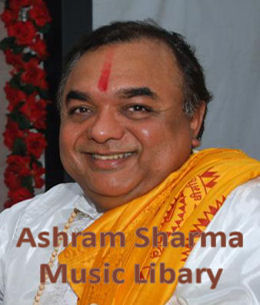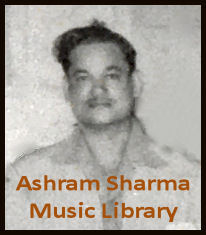
K.B. Singh (Kung Beharry Singh)
The Unforgettable Legacy of K.B. Singh
Born on September 26, 1920, amidst the vibrant pulse of Aranguez, San Juan, North Trinidad, a destiny was set into motion. Young Kung Beharry Singh, whose spirit seemed attuned to the very melodies of the island, would soon embark on a journey that would etch his name into the archives of Indian classical art. Though his earliest years saw him migrate to the quieter embrace of Longdenville, Central Trinidad, it was there, surrounded by the echoes of tradition, that his true calling came into being.
At the tender age of 12, a profound yearning stirred within K.B. Singh, a deep-seated passion to master the intricate beauty of the West Indian style of Indian Classical music. With a heart brimming with enthusiasm, he turned to his father, a revered singer and musician in his own right. In his father, he found not just a teacher, but his first Guru – a guide who would illuminate the path to artistic excellence.
His father, a master of Hindi, didn’t just teach him notes and rhythms; he imparted the very soul of the language – its grammar and proper pronunciation which would undoubtedly give him the edge that would define his future. Beyond the technicalities, his father instilled in him profound values, a belief in approaching everything with a wholehearted devotion. It was this unwavering spirit, nurtured by his father’s unwavering grace and profound mentality that molded K.B. Singh into the unparalleled classical singer he became. His gratitude to his father was immeasurable, a testament to the deep emotional foundation of his artistic journey.
Kung Beharry Singh’s voice, a tapestry woven with devotion and mastery, resonated across every stage he graced. He was a beloved fixture at Bhagwat, Ramayan Yagnas, and weddings, his renditions transforming spiritual gatherings into moments of pure transcendence. But he was also a fierce competitor, captivating audiences and commanding respect at singing exhibitions and competitions throughout the land. His artistry knew no boundaries, leading him to tour Suriname, Guyana, and other Caribbean nations, sharing the rich heritage of his music far and wide.
He shared stages with giants like Haniff Mohammed, Ramdhanie Shama, Isaac Yankarran, and James Ramsewak, forging deep connections, including a lasting bond with Pandit Mahase Maharaj. K.B. Singh was a connoisseur of classical forms, effortlessly navigating Dhurpad, Tilana, Thumri, Dadra, Hori, Khemta, Des, Purbi, Malar, Bidhapat, and Ghazals, each style a vibrant color on his vast artistic palette.
His legacy lives on not just in cherished memories, but in the precious recordings that capture the very essence of his brilliance. Albums like “Tent Singing by Kung Beharry Singh,” and “A Battle of the Giants: Yusuff Khan Vs K.B. Singh Volume One (Live in Trinidad)” are more than just records; they are timeless windows into a golden era, preserving the raw power and exquisite beauty of his voice for generations to come.
Even the titles of his most beloved songs evoke a feeling of timeless connection: “Koun Na Saver Radhay Rani,” “Aaj Siew Bhaiyan Aaya,” “Sach Kahay Ta Ka Museebat,” and “Saligraam Suno Binati.” These were the melodies that touched souls, the verses that spoke to hearts, and they continue to do so, a testament to their enduring power.
This great icon, a master of his craft and a luminous star among his peers, consistently left his audience awestruck, their applause a thunderous demand for more. His presence on stage was magnetic, his artistry so profound that it transcended mere performance, becoming an immersive, emotional experience. To this day, his legacy remains unsurpassed, a towering monument in the landscape of Indian classical music. K.B. Singh was, and forever will be, a legend whose name echoes through time, a testament to a life lived with passion, dedication, and an unyielding commitment to art. His spirit, infused in every note he sang, continues to inspire, reminding us of the profound impact one extraordinary individual can have on the world. (Copyright Nisha Sharma 2025).































